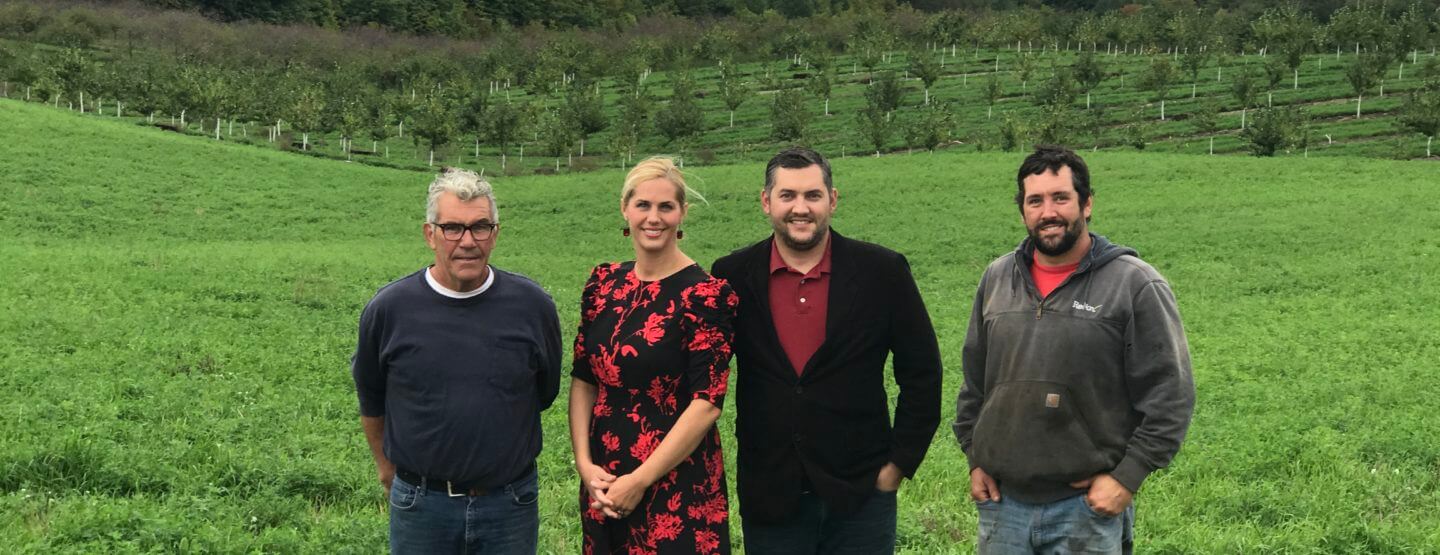John Gallagher Jr. says that he and his family “have been blessed” to own more than 400 acres of breathtakingly gorgeous farmland in Leelanau’s Elmwood Township. Panoramic views from the land’s highest point take in neat rows of cherry trees and pockets of northern hardwoods, with West Grand Traverse Bay and Power Island as a stunning backdrop.
From here, the Gallaghers can see the Cherry Festival fireworks, watch the Blue Angels’ air show, and can even hear concerts on The Open Space. “No one knows we’re here,” says John Jr. And he kind of likes it that way. In September, the family protected 172 acres of their 400-acre-plus holdings with a conservation easement. A conservation easement is a legal agreement that keeps land in private ownership and on the tax rolls, but restricts development in order to protect the land’s natural features (learn more in “The Nuts and Bolts of Farmland Protection” at the end of this story.)
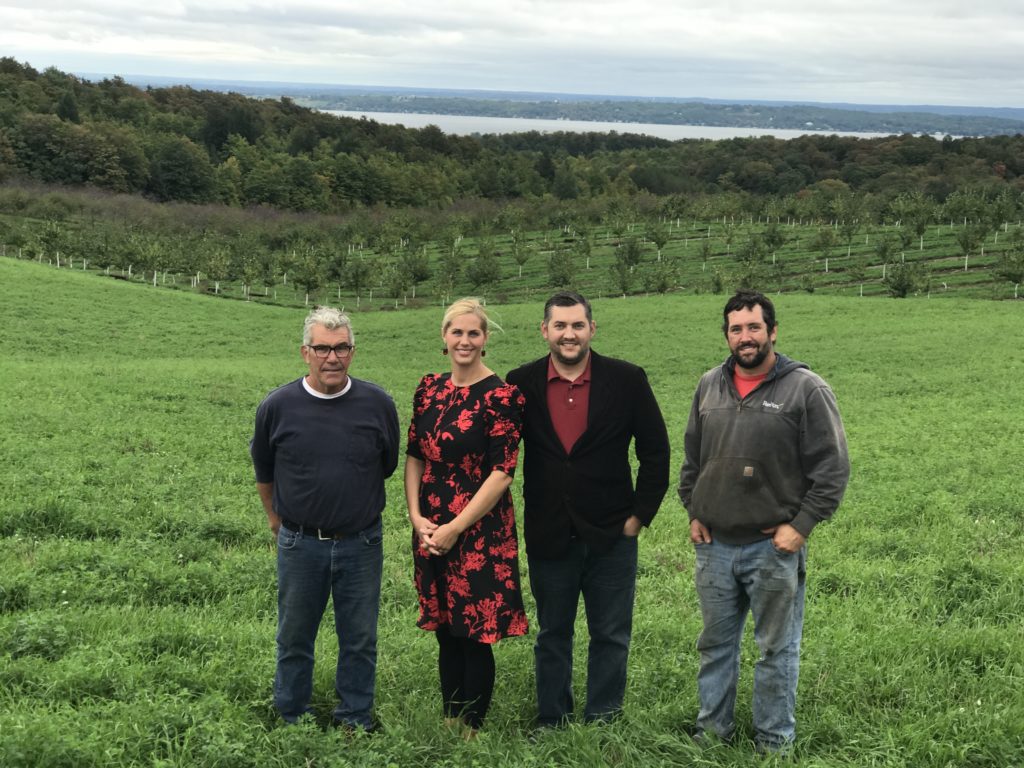
John Jr. is one of seven children in a long line of Gallaghers—he is in fact, the 5th generation descended from ancestors who came over from Ireland. His sister, Maria Lammers, owns and operates the Gallagher Farm Market on M-72 that their parents purchased for retail sales in 1972.
Their father, John Sr., who went by “Jack,” was born on a centennial farm on Long Lake. In 1953, Jack married a young woman named Bernadine, who had been raised on a farm on Gills Pier. They purchased the family farm in 1963, starting out with 160 acres and an old farmhouse, making do with a hand pump and an outhouse until they could afford to make improvements. John Jr. and his six siblings were raised here, and his mom, 88, still lives in the house.
As more land came available, Jack “kept adding to the core,” says John Jr. “He was very wise.” Tragically, his father died at 60 after a battle with lymphoma in the late ‘80s. “Dad wanted to keep the land in farming and I told him that is what I wanted to do,” says John Jr., who studied horticulture at MSU. He was 29 when he took over.
Bumping along in a pickup truck one fall day he and his son, Jordan, talk about what makes this land so great for growing cherries. “The air flow and drainage here is ideal,” says Jordan. “We can often escape a frost that strikes other farms. And the sandy soil is perfect for fruit. If the soil is too heavy, you can’t grow sweets.”
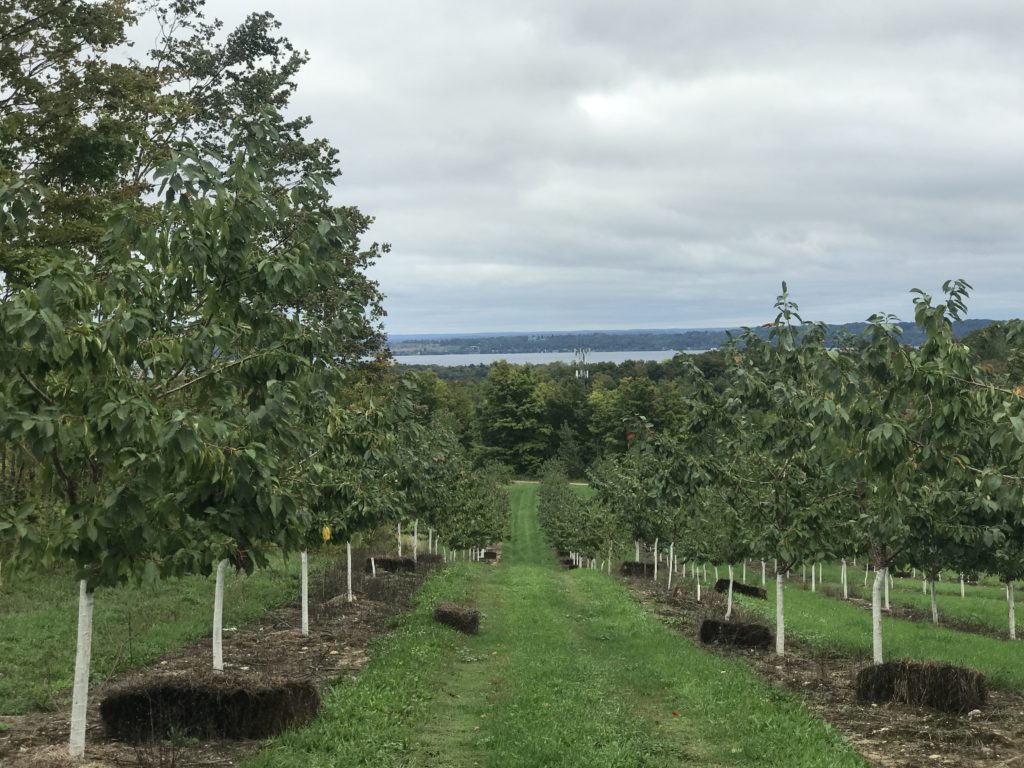
Jordan earned a degree in Natural Resources Management from Grand Valley State University. “This guy,” says Jordan, gesturing at his dad, “told me that I needed to study something that could help the farm.” Soil science is his expertise, and as a side job, Jordan represents a line of sustainable fertilizers and pesticides produced for agriculture. What excites him is a “less is more” approach, using the right thing in just the right amount to minimize cost and to maximize sustainability.
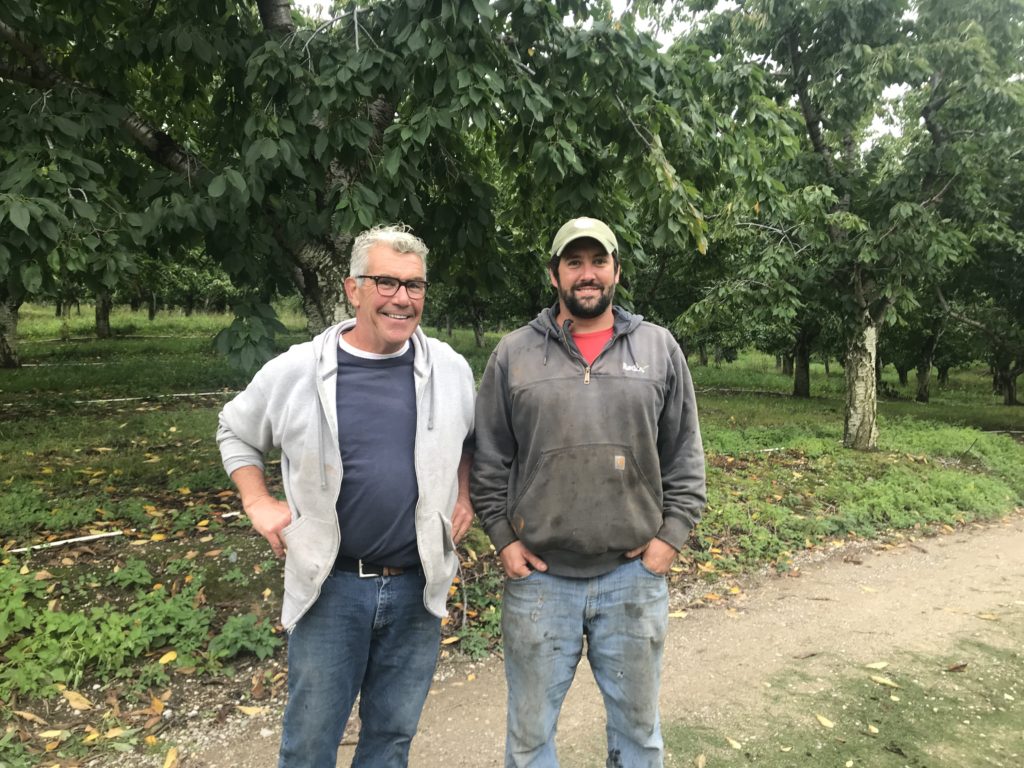
A unique feature on the land is an irrigation pond. Jack worked with the DNR to create the pond, fed by five springs which converge in a forested valley. It has doubled as a swimming and fishing hole for the family over many decades. John Jr.’s own 10 children and 15 grandchildren play here today. John Jr. stocks the pond with rainbow trout and gauges the health of the pond by the fish, which are sensitive to their surroundings. “Too much nitrogen or other nutrient runoff kill the fish,” says John Jr.
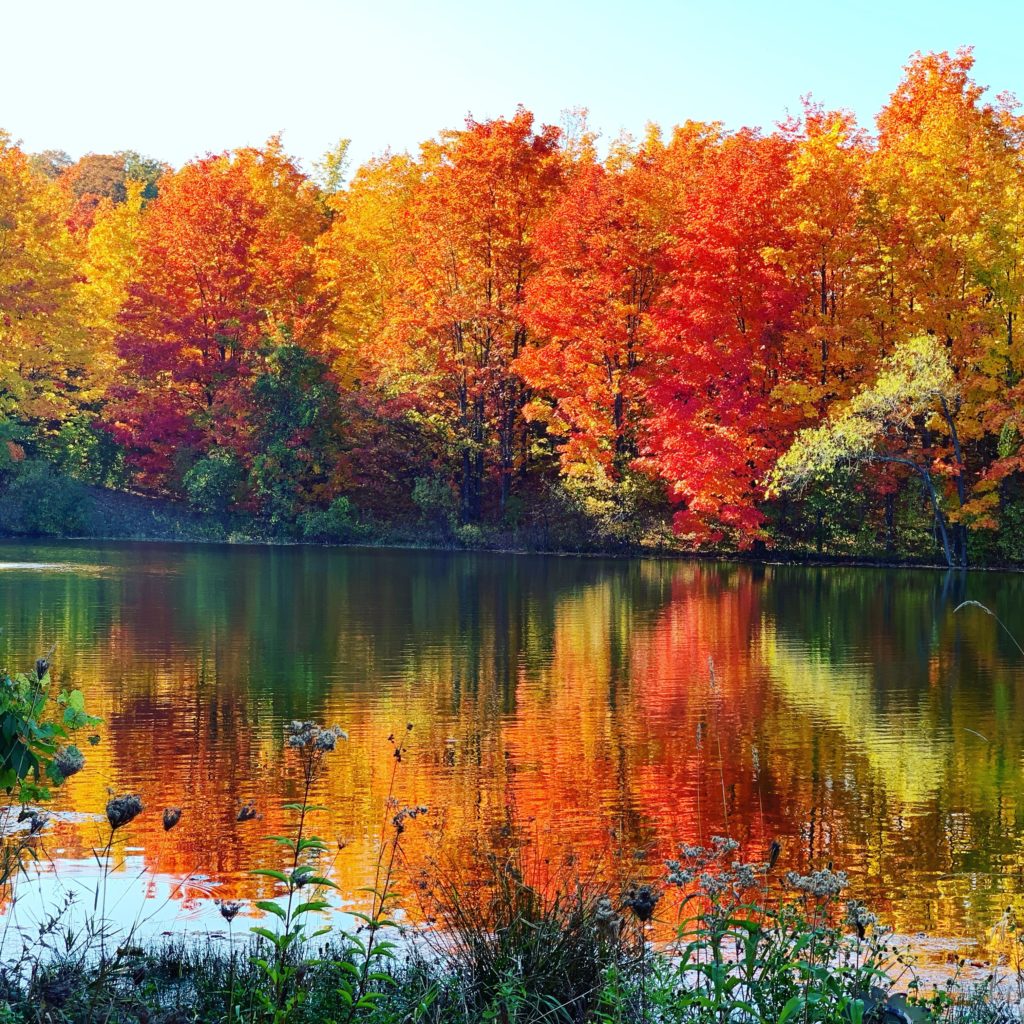
At one of the highest points on the land, we’re joined by John Jr.’s oldest child, Johnny, 36, and his wife, Rose. Johnny works full time as Leelanau County Treasurer, and Rose is Traverse City East Middle School’s principal. They were high school sweethearts who met at St. Mary’s and have five children.
Like Jordan, Johnny knew he had to bring something unique to the family business and so he studied accounting. In addition to pitching in on the farm, he serves as financial advisor and keeps the books. However for him, the farm is much more than the numbers on a balance sheet.
“This is a legacy farm,” says Johnny. “You can’t reproduce this. Or create this atmosphere and environment anywhere in the county. We were so fortunate to grow up here and almost never left the farm. It was our playground with the pond, the woods…an awesome way of life. We want the farming industry to be valued now and going forward. It’s a calling.”
Rose agrees. “We both appreciate so much the sacrifices of previous generations,” she says. “I feel like we are honoring them by keeping one of the most beautiful places in the county intact so that our children and those who come after us will know this life.”
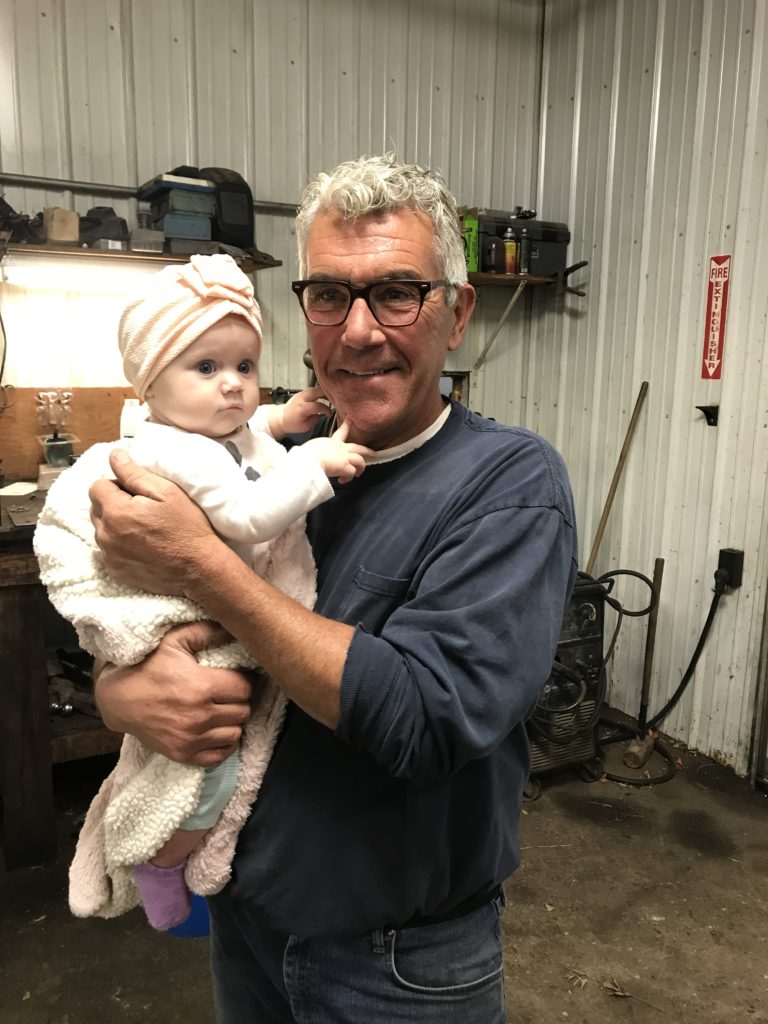
Johnny is the oldest of John Jr.’s 10 children and he and Rose built a house just a stone’s throw from where his dad grew up. He said when he went off to Central Michigan University at 18, he couldn’t stand being away. “This farm always lures you back,” he says, adding that he left CMU after six months and came home and graduated from Northwestern Michigan College.
They talk about the challenges cherry farmers face from bad weather to a devastating fruit fly to Turkish imports that are driving down prices. Last year the Gallaghers grew nearly two million pounds of cherries. “Our processor has been more than fair,” says John Jr., but adds that imported cherries are “selling at below-cost prices.” To make matters worse, the Gallaghers lost an estimated 300,000 pounds when the cherries split in a heavy rain on a 90-degree day.
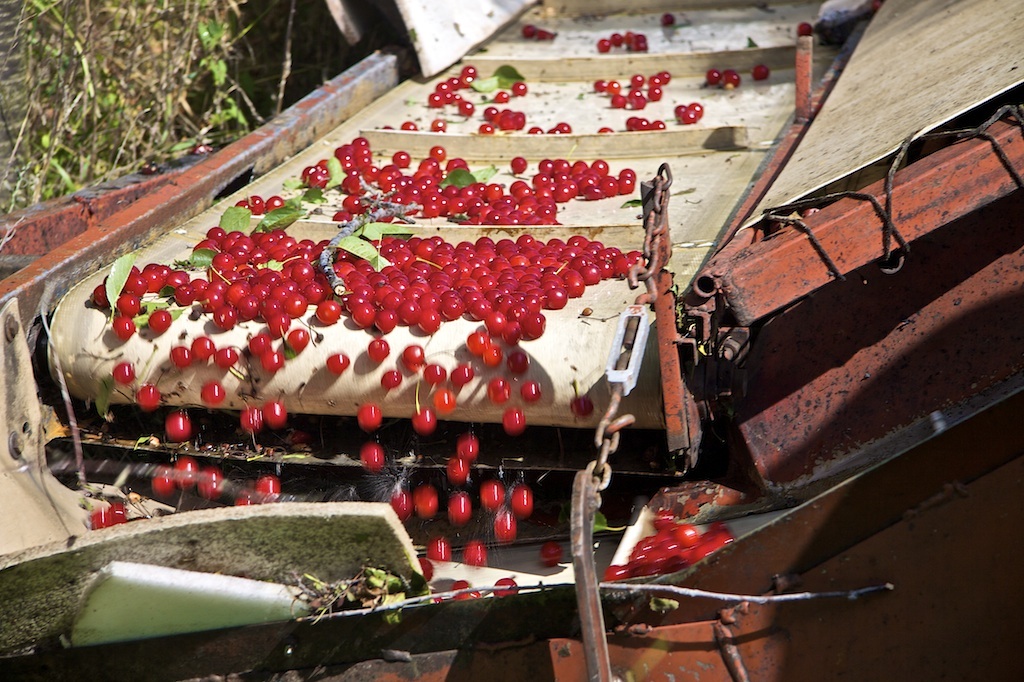
The Gallaghers see diversification as the key to survival. In recent years they have ripped out older trees and planted new ones which will eventually double or even triple the amount of fruit harvested from the same effort and space. Funds from their sale of development rights to the Leelanau Conservancy will help them to convert more trees from old to new. “Cherries are a long-term commitment,” says Johnny. It takes seven years to see any return on investment. “We know that every step we take has an effect on our future, and everything we do has intention.”

To bring in more revenue, last year they created a cherry u-pick and a hilltop wedding venue called Bay View Weddings, which Rose runs. The Gallaghers have faced bad years, gone into debt, but refuse to give up. Jordan and his wife, Colleen, who have two children, also live nearby. He says common goals of “farm, family and faith, and not necessarily in that order,” help them to all get along. “No matter how bad things got, we never talked about selling off a piece,” he adds. “Instead, we all just said let’s work another 10 hours. We are focused on continuous improvement, innovative practices and protecting the environment. We all go home after a long day and think about what we can do to improve. Our appetite for growth and advancement is voracious, and we are always asking questions and looking for opportunities to do it all better.”
The Nuts and Bolts of Farmland Protection
The Gallager’s land was protected as part of the Conservancy’s role in our Northwest Michigan Fruitbelt Regional Conservation Partnership Program grant. The family was compensated for removing the development rights from 172 acres with 50% of the funds coming from this federal program administered by the USDA-NRCS. The Gallaghers donated a portion of the value and donations to the Leelanau Conservancy’s farmland protection fund covered the rest.
“This agricultural conservation easement will permanently protect important groundwater springs that form the headwaters of a small stream flowing through the Conservancy’s DeYoung Natural Area and eventually into Cedar Lake and West Grand Traverse Bay,” says Matt Heiman, Natural Lands Protection Director, who worked with the family on the project. “The conservation easement also helps protect a very scenic ridgeline enjoyed by boaters out on West Bay. Protection of this productive farm will also ensure 89 acres of prime and unique agricultural soils will forever be available for farming.”

